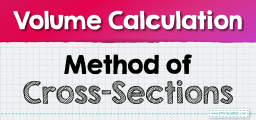How to Graph Transformation on the Coordinate Plane: Rotation?

- For rotating a shape \(90\) degrees counterclockwise:\((x, y)→(-y, x)\)
- For rotating a shape \(180\) degrees: \((x, y)→(-x, -y)\)
- For rotating a shape \(270\) degrees counterclockwise: \((x, y)→(y, -x)\)
- You should be able to assume the center of rotation to be the origin when working on the coordinate plane unless otherwise stated.
- You should be able to assume that, unless otherwise stated, a positive angle of rotation rotates the figure counterclockwise and a negative angle rotates it clockwise.
- You need to be able to recognize angles of certain sizes when working with rotation. \((90^{\circ}, 180^{\circ}, 270^{\circ}, …)\)
- You must be able to understand the directionality of a unit circle. (the circle with a radius length of \(1\) unit)
- You must know that rotation on a coordinate grid is considered to be counterclockwise unless otherwise stated.
Transformation: Rotation – Example 1:
Transformation: Rotation – Example 2:
Solution:
The rule for rotating a shape \(270\) degrees is \((x, y)→(y, -x)\)
\(A=(-4, 1)→A^\prime=(1, 4)\)
\(B=(-3, 3)→B^\prime=(3, 3)\)
\(C=(-1, 4)→C^\prime=(4, 1)\)
\(D=(0, 2)→D^\prime=(2, 0)\)
\(C=(-2, 1)→C^\prime=(1, 2)\)
Graph the figure \(ABCDE\) and its image \(A^\prime B^\prime C^\prime D^\prime E^\prime\).
Exercises for Transformation: Rotation
Graph the image of the figure using the transformation given.
1.\(\color{blue}{Rotation 180^{\circ}}\)
2.\(\color{blue}{Rotation 90^{\circ}}\)
Related to This Article
More math articles
- A Comprehensive Collection of Free ALEKS Math Practice Tests
- Equation of Each Ellipse and Finding the Foci, Vertices, and Co– Vertices of Ellipses
- Understanding and Mastering Perpendicular Lines and How to Draw Them
- Best Smartphones for Math Teachers
- How to Understand the Nuance of Equality of Vectors in Two Dimensions
- Volume of Cubes
- Top 10 3rd Grade ACT Aspire Math Practice Questions
- Decimals Unfolded: How to Switch Between Standard and Expanded Forms
- Best Noise-Cancelling Headphones for Online Teaching
- One-Sided Limits: Everything You need to know




















What people say about "How to Graph Transformation on the Coordinate Plane: Rotation? - Effortless Math: We Help Students Learn to LOVE Mathematics"?
No one replied yet.